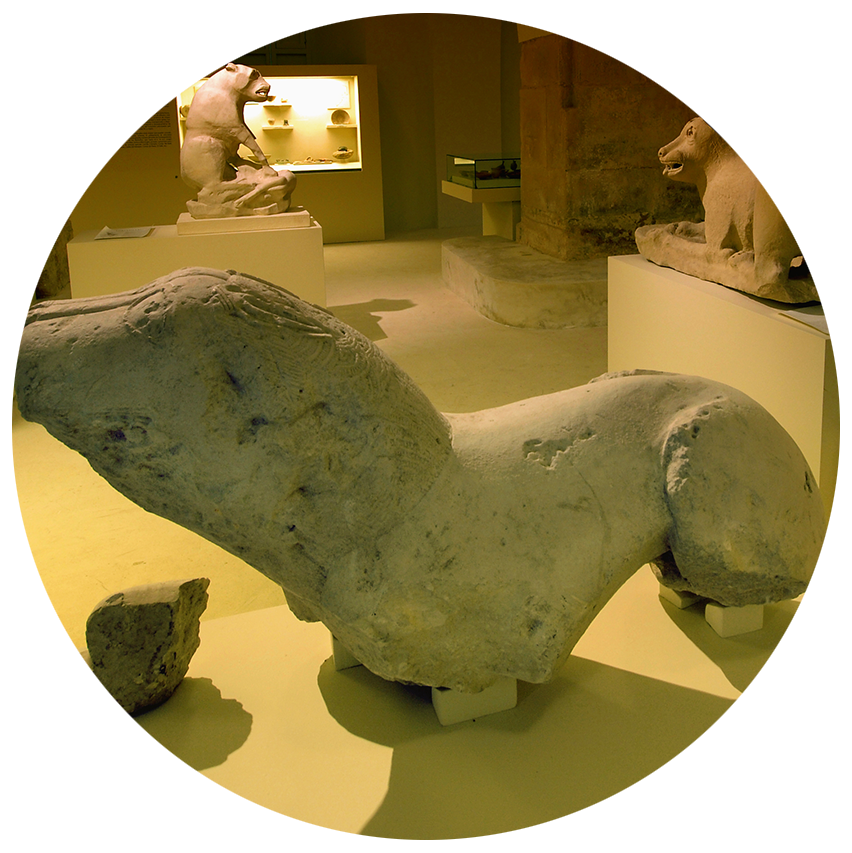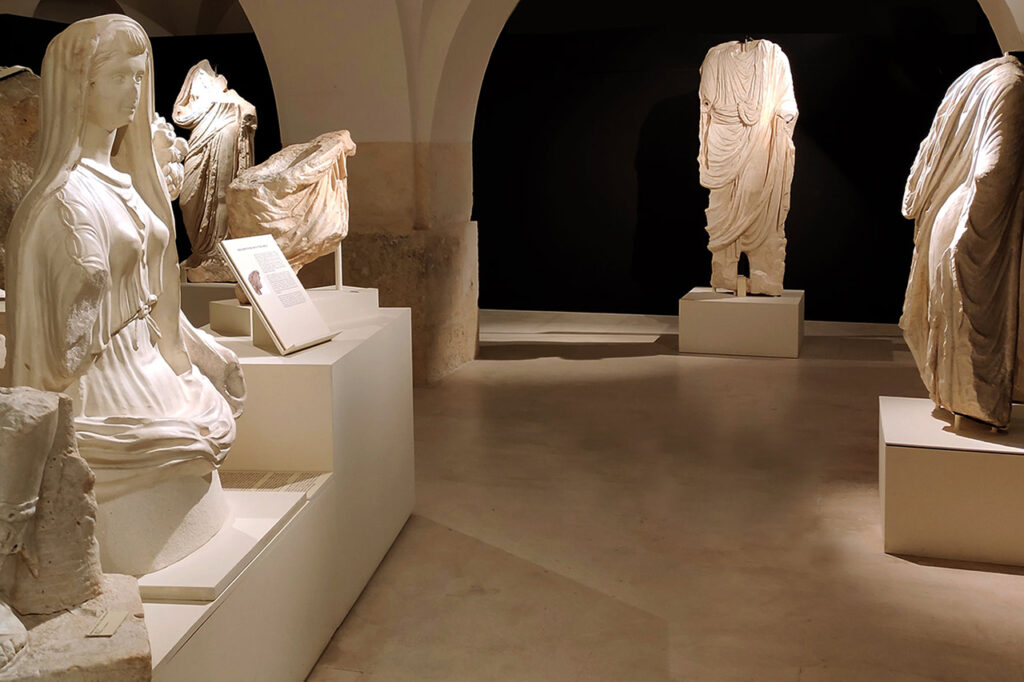
Municipal Historical Museum
Distributed over three floors where there are also spaces dedicated to storage, conferences and exhibitions, the Historical Museum of Baena has a magnificent collection of pieces that are exhibited in chronological order as follows:
Room I. Dedicated to prehistory and the Iberian world, the zoomorphic sculptures are especially relevant, especially felines, as well as the large collection of stone votive offerings from the sanctuary of Torreparedones. Weaponry, architectural pieces and an interesting collection of coins complete this room from which you can access the main patio of the building where there is a sculptural triad made of marble that represents the deified emperors Augustus and Claudius, as well as the empress Livia, a of the most influential women in history.
Room II is devoted to Roman sculpture and, in addition to theIn addition to the city that existed in what is now the Torreparedones archaeological park (Ituci Virtus Julia according to some authors or Bora, as more recent research suggests), other important urban centers such as Iponoba (Cerro del Minguillar) or the Contributo Ipscense Municipality (Cerro de la Aldea, next to the Cortijo de Izcar) that have contributed to this museum first class sculptural pieces, exhibited next to the pedestals of others, in the room in question, dedicated to the historian local Valverde and Perales.
Room IV houses thehe museum’s numismatic collection made up of more than 2,000 coins, as well as rings and other Roman jewels of singular importance. Next to them, various construction elements such as fragments of columns or capitals tell us about the architecture of the Empire, the same one that developed a Culture widely documented in the pieces exhibited in Room V where, judging from archaeology, the romanization of the current territory of Baena was an indisputable fact.
On the top floor of the Museum we find Room VII, dedicated to the Middle Ages. It depicts theto Late Antiquity with various materials from the Visigothic period (plates decorated with a mould, belt buckles and ceramic jugs from a funerary environment, as well as an early Christian ring with the name of Sabina and a reproduction of the missing Crismón de Baena). For its part, ehe Muslim period is also represented by ceramic elements related to the ancient Bayyena.
Finally, from theModern and Contemporary Ages , some heraldic coats of arms of the locality are shown, next to which is located theRoom VIII, whiche offers some fundamental documents of the history of the municipality, together with the gallery of illustrious people of the town, among which, due to the greatness and importance of their works, Juan Alfonso de Baena and José Amador de los Ríos stand out. One of the jewels in the room is the first color facsimile of the Baena Songbook, made exclusively for study and exhibition in this museum.

Main courtyard of the Historical Museum of Baena.

Roman statuary in room II of the Museum.
A growing museum
Despite the significant discoveries produced over time and having even had an Archaeological Society created at the beginning of the 20th century, Baena did not have a museum space dedicated to the different cultures that left their mark on it until the end of the same century. the territory. Originally, the Museum occupied only part of the second floor of the Casa de la Tercia, exhibiting a modest collection that, however, fulfilled the didactic purpose of this type of institution and served as an incentive for numerous donations that, from From that moment, it would begin to receive the Town Hall of the town. However, the determined municipal commitment to the archaeological heritage and the excavations carried out at the Torreparedones site, allowed that primitive room in which for more than a decade some meager vestiges of the historical evolution of Baenense were displayed, ended up becoming one one of the most unique museums in Andalusia. A growing space that ended up occupying the entire building where it was previously modestly housed.
A museum of great importance
The Historical Museum of Baena occupies a prominent place at the national level both for the wide collection of Iberian pieces that it exhibits, and for the remarkable set of Roman sculptures that it exhibits in its different spaces.